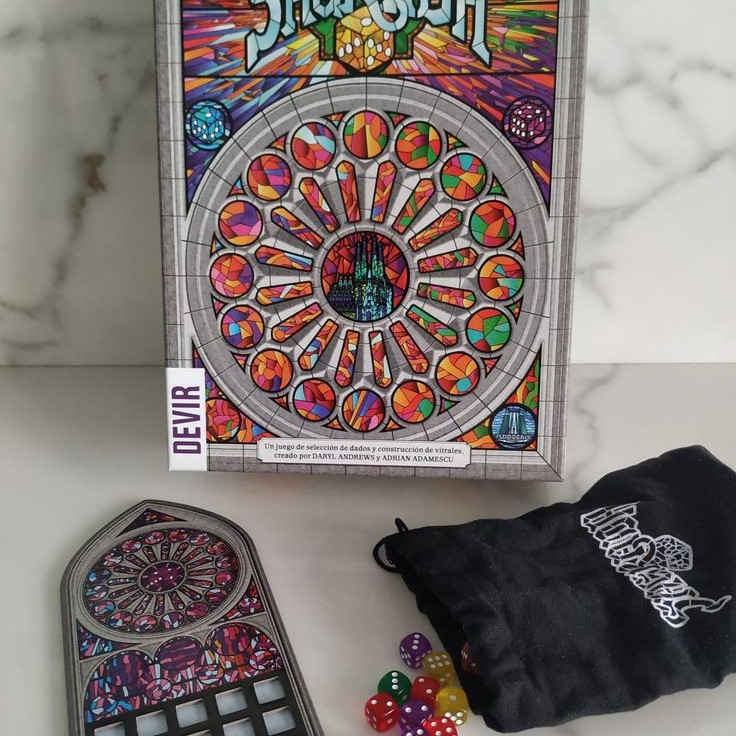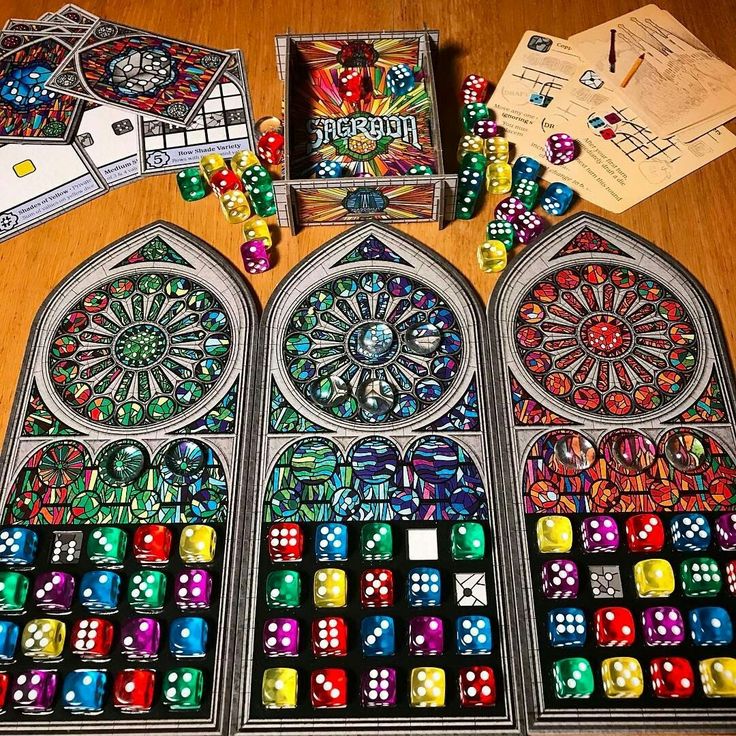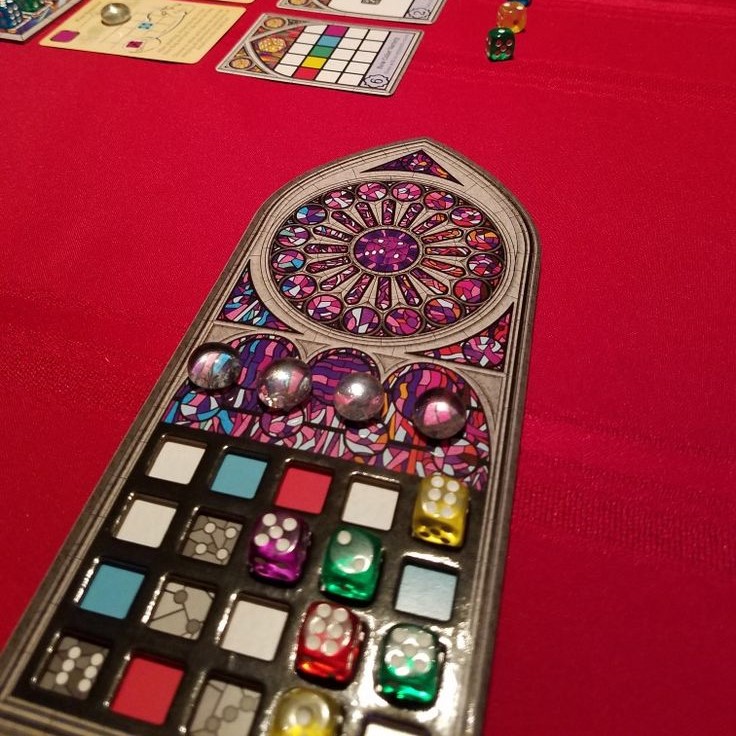Introduction
The Sagrada board game has captivated many board game enthusiasts with its unique gameplay and stunning aesthetic. Designed by Adrian Adamescu and his team, Sagrada invites players to step into the role of artisans as they construct beautiful stained glass windows in a grand cathedral. Each player competes to create the most intricate design using colorful dice while adhering to specific placement rules.

Since its release, Sagrada has generated a solid following, sparking discussions about its depth, strategic elements, and overall appeal. In this comprehensive review, we will explore the various aspects of the Sagrada board game, including its gameplay mechanics, components, strategies for success, and player feedback, in order to gauge whether it is truly worth the hype.
Components and Artwork
One of the most striking features of the Sagrada board game is its phenomenal artwork and components, which significantly contribute to its appeal.
1. Game Components
Sagrada includes various components designed to enhance the gameplay experience.
- Colorful Dice: The game features a set of beautifully crafted, multi-colored dice. Each die represents different glass pieces, reflecting the overall theme of stained glass artistry. Players will find that the colors add vibrancy to the game.
- Player Boards: Each player receives an individual board where they construct their stained glass windows. These boards are aesthetically pleasing and feature grid patterns that align with the gameplay, encouraging creativity.
- Tools and Tokens: Sagrada offers tool cards and tokens that affect gameplay mechanics. These tools allow players to manipulate dice placement, adding layers of strategy and depth, enriching the overall experience.
2. Artistic Design
The overall artistic design of Sagrada is consistent and charming.
- Visual Appeal: The game’s visual quality is remarkable. From the box cover to individual components, Sagrada offers a feast for the eyes.
- Immersive Experience: The thematic elements help immerse players in the experience of being a glass artisan, making it enjoyable for both casual players and seasoned board game lovers alike.
Gameplay Mechanics
Understanding the gameplay mechanics is essential when determining whether the Sagrada board game is worth the hype.
1. Basic Rules
The rules of Sagrada are straightforward, making it accessible for newcomers while still offering depth for experienced players.
- Setting Up: Each player receives a board, dice, and tool cards. Players draw dice from a communal pool and roll them to begin crafting their stained glass windows.
- Dice Placement: Players take turns selecting dice and placing them on their boards according to specific rules. They must adhere to restrictions related to color and number placement, introducing an enjoyable level of challenge.
- Winning the Game: The game concludes once all players finish filling their boards or the dice pool is depleted. The player with the highest score based on completed objectives wins.
2. Scoring System
The scoring system adds a competitive edge to the game.
- Objective: Players earn points by adhering to placement restrictions and fulfilling objectives outlined on their boards. These objectives vary in complexity, catering to different strategic approaches.
- Long-Term Strategy: Players must balance the need for immediate points with long-term strategic planning, which enhances replayability. This aspect makes Sagrada intriguing and engaging for a range of players.
Strategies for Success
Every board game has strategies that can lead to success, and Sagrada is no exception.
1. Planning Your Moves
Planning is crucial in Sagrada. Players should take their time to consider their moves carefully.
- Consider Future Turns: Players should think ahead about how current placements will impact future decisions, avoiding moves that limit options later in the game.
- Utilize Tool Cards: Using tool cards strategically can provide a competitive advantage. These cards allow players to manipulate dice placements in ways that their board restrictions may not otherwise permit.
2. Observation of Opponents
Watching what your opponents do can provide helpful insights.
- Blocking Strategies: Keeping an eye on rivals’ boards is essential. Knowing their objectives can inform your decisions about which dice to take and where to place them.
- Adapting Strategies: Players should not hesitate to adjust their strategies based on their opponents’ actions. If rivals are focusing on a specific color, it may be wise to pivot your approach.
Player Reviews and Community Feedback
To gauge the true value of the Sagrada board game, it’s crucial to consider player reviews and community feedback.
1. Positive Experiences
Many players have shared positive experiences with Sagrada.
- Engaging Gameplay: Reviewers frequently highlight how engaging Sagrada is. Players often report that every game feels different due to the variety of dice, player strategies, and objectives available.
- Family-Friendly Atmosphere: Families appreciate the inclusive nature of the game. The mechanics are simple enough for younger players, making it a great addition to family game nights.
2. Critiques and Drawbacks
While many enjoy the game, it’s also essential to consider critiques.
- Luck Factor: Some players argue that dice rolling introduces an element of luck that can affect outcomes. This can lead to frustration for those who prefer games based purely on strategy.
- Time Investment: A few players note that setup and explanation can take some time, especially for newcomers. However, almost all agree that the gameplay experience is worth the initial investment.
Visual Setup and Game Flow
Understanding how the game is set up and the flow of play can significantly impact your enjoyment of Sagrada:
1. Game Setup
Setting up the Sagrada board game is quick and straightforward.
Initial Arrangement
- Lay Out Player Boards: Start by taking the player boards and placing them on a flat and accessible surface. Ensure that each board is oriented correctly so that all players can see their respective areas clearly. This layout provides an organized start to the game and helps players quickly familiarize themselves with their boards.
- Provide Dice Trays: Each player should receive their own dice tray. Distributing these trays at the beginning ensures that players have a designated area to roll and keep their dice contained. This reduces the chances of dice rolling away or getting lost during gameplay.
- Set Up the Central Dice Pool: Next, establish the central pool for the dice. Place a sufficient number of dice in this shared area to accommodate all players’ needs throughout the game. This communal setup encourages interaction among players and streamlines the rolling process.
- Shuffle Tool Cards: After arranging the player boards and dice, shuffle the tool cards thoroughly. Shuffling is essential to ensure a random distribution of cards when they are drawn during the game. Place the shuffled tool cards face down near the central pool so players can easily access them as needed.
- Final Checks Before Starting: As a final check, confirm that all necessary components are present and visible to all players. Ensuring that no pieces are missing or misplaced before the game starts can help prevent disruptions during play and keeps the excitement levels high.
Choosing Colors
- Selecting Color Preferences: At the start of the game, players can choose their favorite colors for their boards and components. Offering the option to select colors personalizes the game experience and allows players to feel more connected to their chosen pieces.
- Random Color Assignments: Alternatively, players may opt for random color assignments. This option can add a fun and spontaneous element to the game, particularly for groups who enjoy unpredictability. Random assignments can also foster a sense of equality among players, as each player receives a chance for diversity.
- Consider Group Dynamics: When choosing colors, keep in mind any group dynamics. If the group has strong color preferences or rivalries, it might be worth discussing color choices openly. Ensuring that everyone is satisfied can create a more enjoyable and harmonious gaming atmosphere.
- Communicating Preferences: Once colors have been selected or randomly assigned, communicate clearly to ensure that all players are aware of their respective colors. Clear identification helps prevent mix-ups during gameplay and enhances overall engagement.
- Enjoy the Process: Whether players are choosing their favorite colors or taking pot luck with random assignments, the initial selection process should be enjoyable. Encourage laughter and conversation as players make their choices, setting a positive tone for the game ahead.
2. Game Flow
Once the game is set up, players take turns selecting dice and placing them on their boards.
- Turn Sequence: The player’s decision-making during their turn prompts thought and planning. Each choice affects how others can play, heightening the game’s competitiveness.
- Ending the Game: The game progresses until player boards are filled or the dice pool is empty. Encourage players to keep an eye on how the game state changes and adapt their gameplay accordingly.
Final Thoughts on Sagrada
In conclusion, the Sagrada board game offers an excellent blend of aesthetic appeal, strategic depth, and engaging mechanics. Its unique theme, beautiful components, and family-friendly gameplay make it a worthwhile addition to any board game collection. Moreover, its ability to cater to both casual players and enthusiasts ensures that everyone can enjoy the rich experience it provides.

While some players may debate the influence of luck in gameplay, the overall strategic opportunities present in Sagrada are robust. From the satisfaction of crafting intricate stained glass windows to experiencing the friendly competition among players, the game creates memorable moments that resonate.
Ultimately, Sagrada not only lives up to the hype but also offers endless enjoyment. Whether you are new to board gaming or a seasoned player, Sagrada is a must-try experience. Embrace the chance to engage with friends and family around the table, and let your creativity shine while playing Sagrada!







